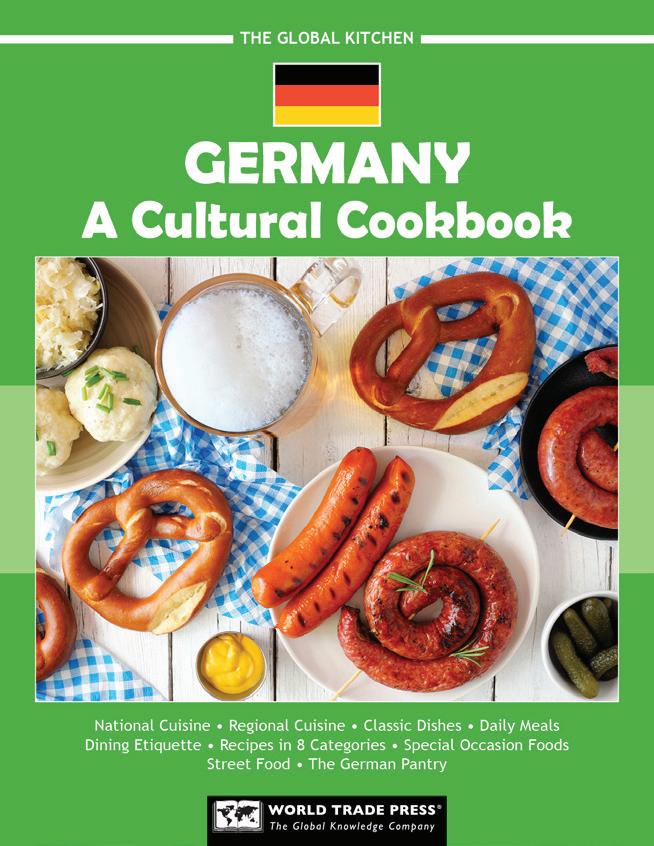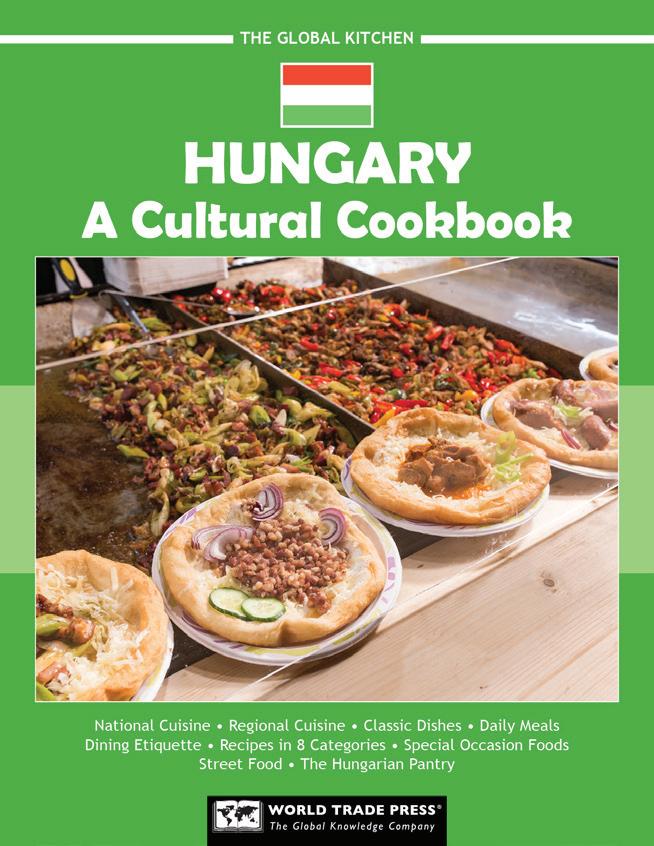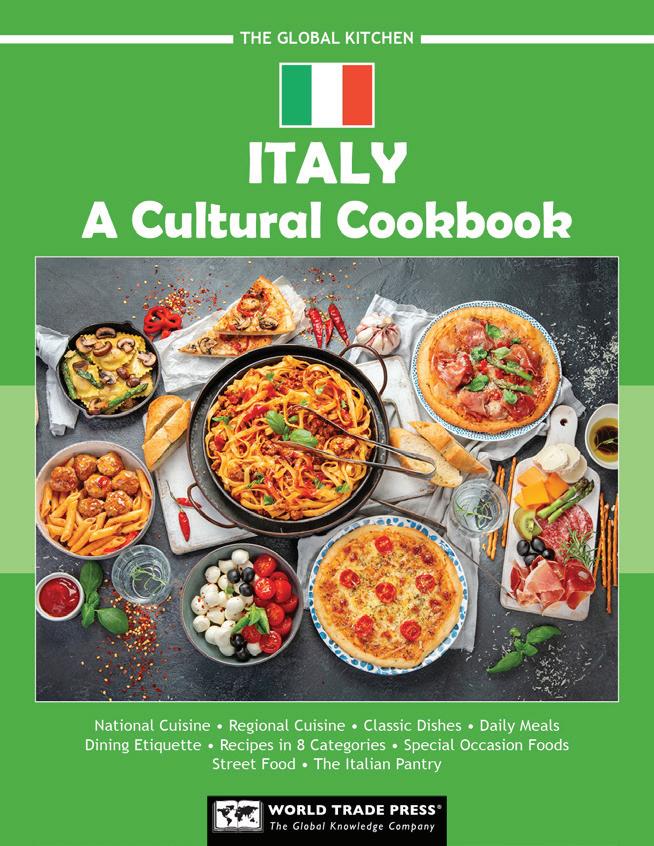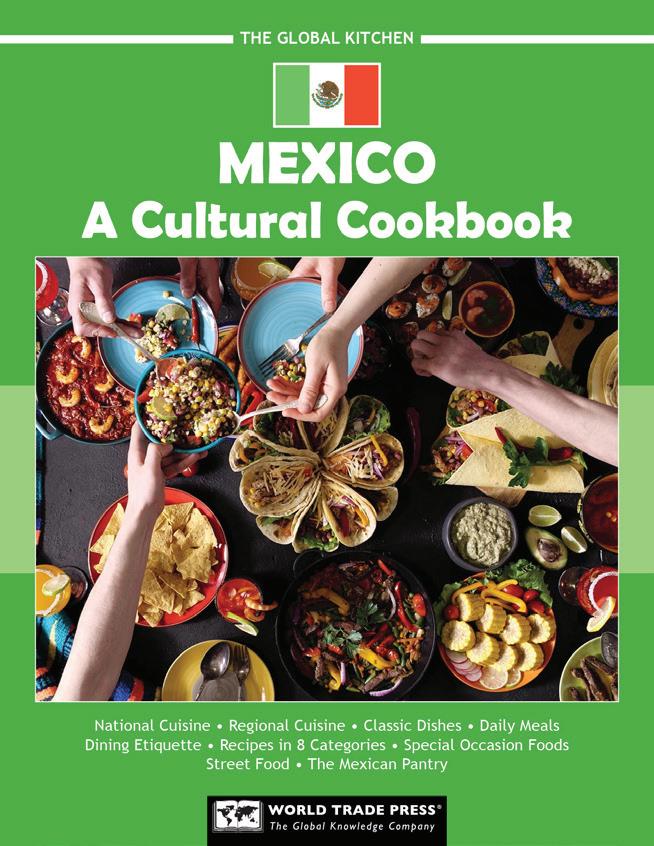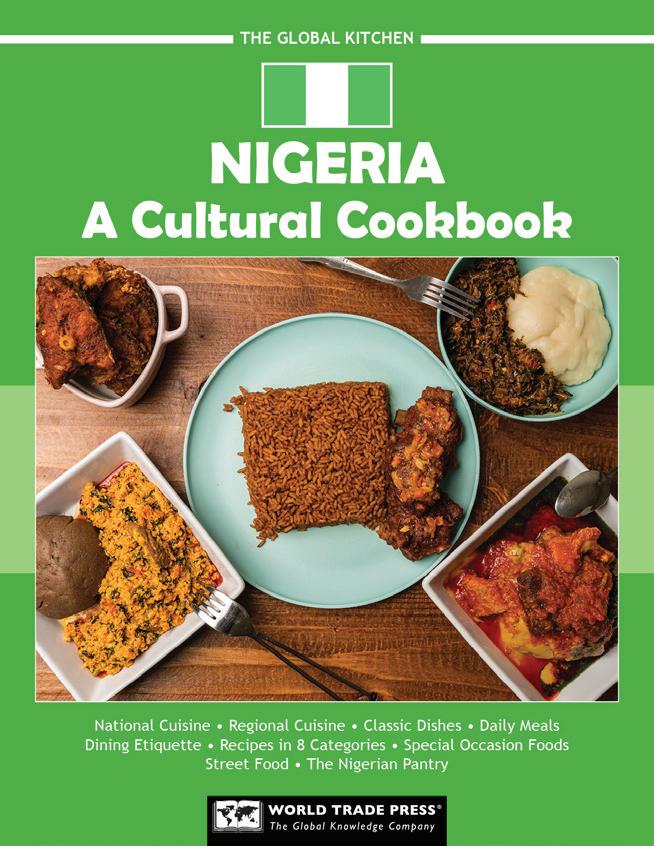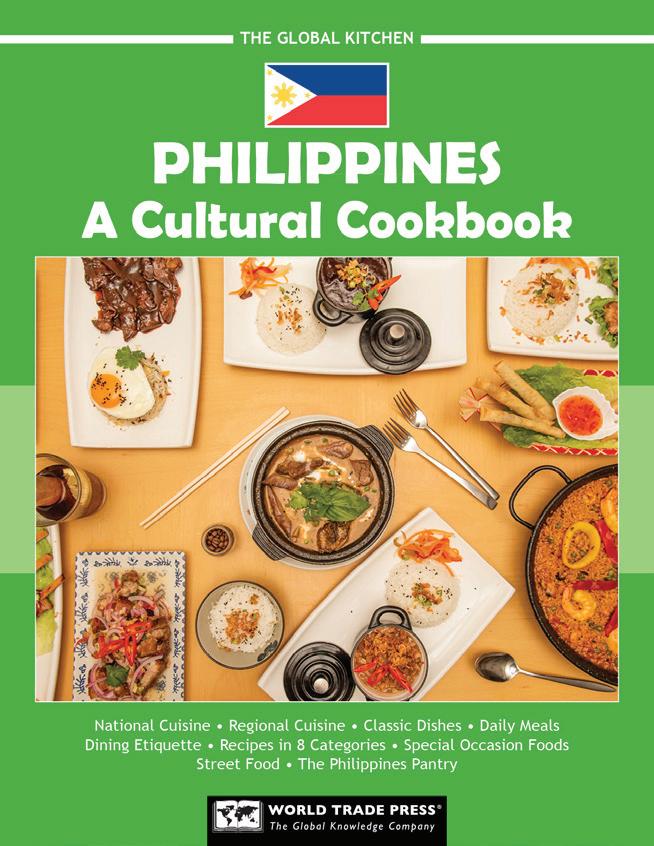A Cultural Cookbook
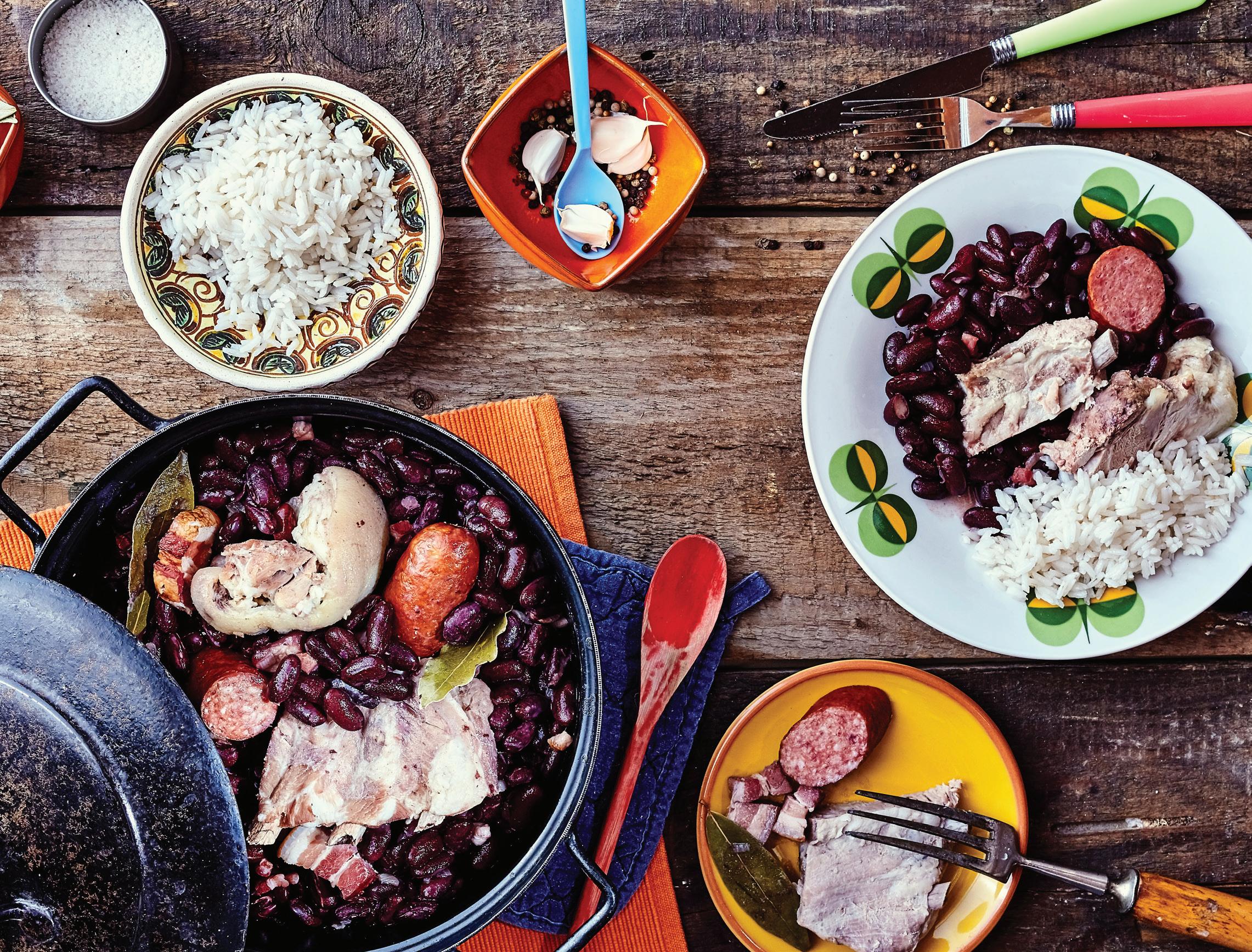
National Cuisine • Regional Cuisine • Classic Dishes • Daily Meals
Dining Etiquette • Recipes in 8 Categories • Special Occasion Foods Street Food • The Brazilian Pantry
SPECIAL OCCASION FOODS
NATAL (Christmas)
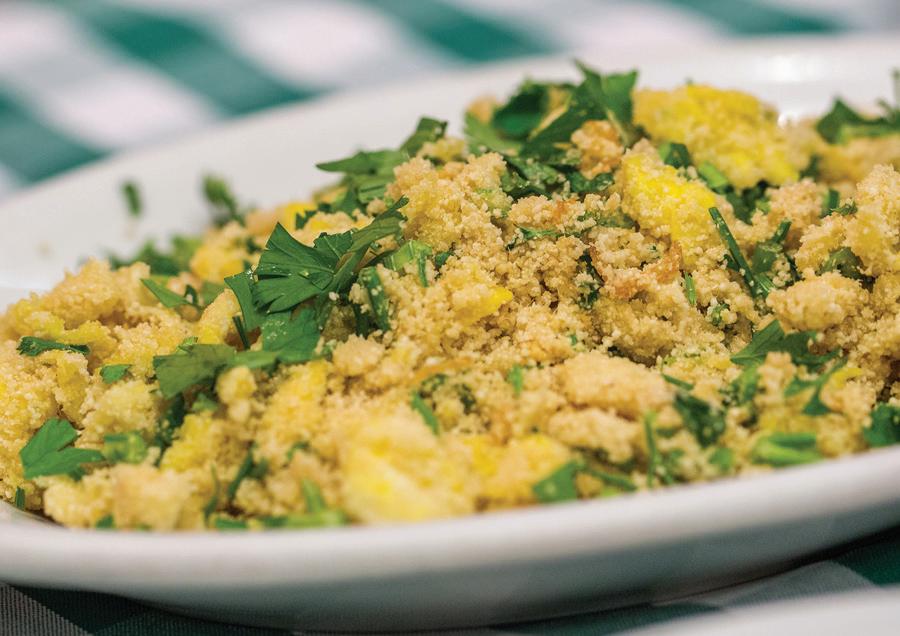
Christmas in Brazil is a time for large family gatherings and special meals. While many European traditions in uence the Brazilian Christmas ta le local a ors are equally important. Roasted turkey or ham is often served, accompanied by side dishes such as arroz à grega (rice with raisins and vegetables), farofa, seasoned fried manioc our, and a potato salad called maionese that may contain apples and raisins.
Bacalhau (dried salted cod), a dish inherited from Portugal, also is a popular holiday staple, often made into a dish with eggs, potatoes, onions, peppers, and olives. Tropical fruits such as bananas, papaya, mango, and pineapple are incorporated into salads or desserts. For sweets, rabanada (similar to french toast) is commonly served, along with panettone, a sweet bread lled with raisins and candied fruit.
L l to a P r o al C l brat o WEDDINGS
Brazilian weddings are vibrant celebrations that involve lavish feasts. The wedding meal, often served bu et-style, often starts with appetizers such as pastéis (fried pastries lled with cheese, meat, or hearts of palm) and empadas (small stu ed savory pies).
The main course might include a churrasco (Brazilian barbecue), which re ects the country s love of grilled meats. Feijoada, a bean and meat stew commonly made with pork that is the country s national dish, may also be served, or the seafood stew, moqueca. Salads and rice and beans are typical side dishes.

Along with wedding cake, desserts may include bem casados sponge cake sandwiches lled with dulce de leche (milk caramel) and tru e-like candies called brigadeiros. Toasts are often made with caipirinhas, Brazil s national cocktail made from cachaça (a spirit made from fermented sugarcane juice), lime, and sugar.
LIST OF RECIPES
1. Acarajés (Black-Eyed Pea Fritters)
2. Arroz com Feijão (Rice and Beans)
3. Batata Palha (Crispy Shoestring Potatoes)
4. Bauru (Roast Beef Sandwich)
5. Beijinhos (Coconut Kisses)
6. Bolinhos de Bacalhau (Salt Cod Fritters)
7. Bolinhos de Chuva (Doughnuts)
8. Bolo de Natal (Christmas Cake)
9. Brigadeiros (Chocolate Tru es)
10. Broa de Fubá (Corn Cake)
11. Caldo de Feijão (Bean Soup)
12. Caldo Verde (Green Soup)
13. Canjica (Sweet Hominy Pudding)
14. Casadinhos (Wedding Cookies)
15. Cocada (Coconut Candy)
16. Couve à Mineira (Sautéed Collard Greens)
17. Couve Refogada (Garlicky Collard Greens)
18. Coxinhas (Chicken Croquettes)
19. Creme de Abacate (Avocado Cream)
20. Cuca de Banana (Banana Bread)
21. Curau (Sweet Corn Pudding)
22. Cuscuz Paulista (São Paolo Couscous)
23. Empadinhas (Savory Pies)
24. Escondidinho de Carne Seca (Shredded Beef Casserole)
25. Espetinhos (Kebabs)
26. Farofa (Toasted Cassava Flour)
27. Feijão Tropeiro (Beans with Sausage and Collard Greens)
28. Feijoada (Black Bean Stew)
29. Galinhada (Chicken and Rice)
30. Linguiça Acebolada (Sausage with Onions)
31. Misto Quente (Toasted Ham and Cheese Sandwich)
32. Moqueca de Peixe (Fish Stew)
33. Mousse de Maracujá (Passion Fruit Mousse)
34. Pamonha (Sticky Corn Cakes)
35. Pão Caseiro (Homemade Bread)
36. Pão de Batata (Potato Bread Rolls)
37. Pão de Coco (Coconut Bread)
38. Pão de Milho (Cornbread)
39. Pão de Milho com Ervas Finas (Cornbread with Herbs)
40. Pão de Queijo (Cheese Bread)
41. Pão Francês (French Bread Rolls)
42. Pão Sovado (Sweet Milk Bread)
43. Picadinho (Beef Stew)
44. Pipoca (Popcorn)
45. Polenta Frita (Fried Polenta)
46. Pudim de Leite (Caramel Flan)
47. Purê de Mandioca (Cassava Purée)
48. Queijo Coalho (Grilled Cheese Skewers)
49. Quiabo Refogado (Sautéed Okra)
50. Quibe (Bulgur and Meat Croquettes)
51. Quindim (Coconut Egg Custard)
52. Roast Turkey with Tropical Fruits
53. Roasted Picanha (Sirloin Cap)
54. Romeu e Julieta (Cheese and Guava Paste)
55. Sagu de Vinho (Red Wine Tapioca Pudding)
56. Salada de Alface com Nozes (Lettuce Salad with Walnuts)
57. Salada de Couve (Collard Greens Salad)
58. Salada de Couve com Manga (Kale and Mango Salad)
59. Salada de Feijão Fradinho (Black-Eyed Pea Salad)
60. Salada de Grão de Bico (Chickpea Salad)
61. Salada de Palmito (Heart of Palm Salad)
62. Salada de Palmito com Azeitonas (Palm Heart Salad with Olives)
63. Salada Tropical (Tropical Salad)
64. Salpicão de Frango (Chicken Salad)
65. Sopa de Camarão (Shrimp Soup)
66. Sopa de Castanhas (Chestnut Soup)
67. Sopa de Mandioca (Cassava Soup)
68. Sopa de Milho Verde (Green Corn Soup)
69. Sopa de Palmito (Heart of Palm Soup)
70. Tapioca com Recheio (Tapioca Crepes with Filling)
71. Tomates Recheados (Stu ed Tomatoes)
72. Torta da Batata com Lentilha (Potato Pie with Lentils)
73. Vatapá (Shrimp Stew)
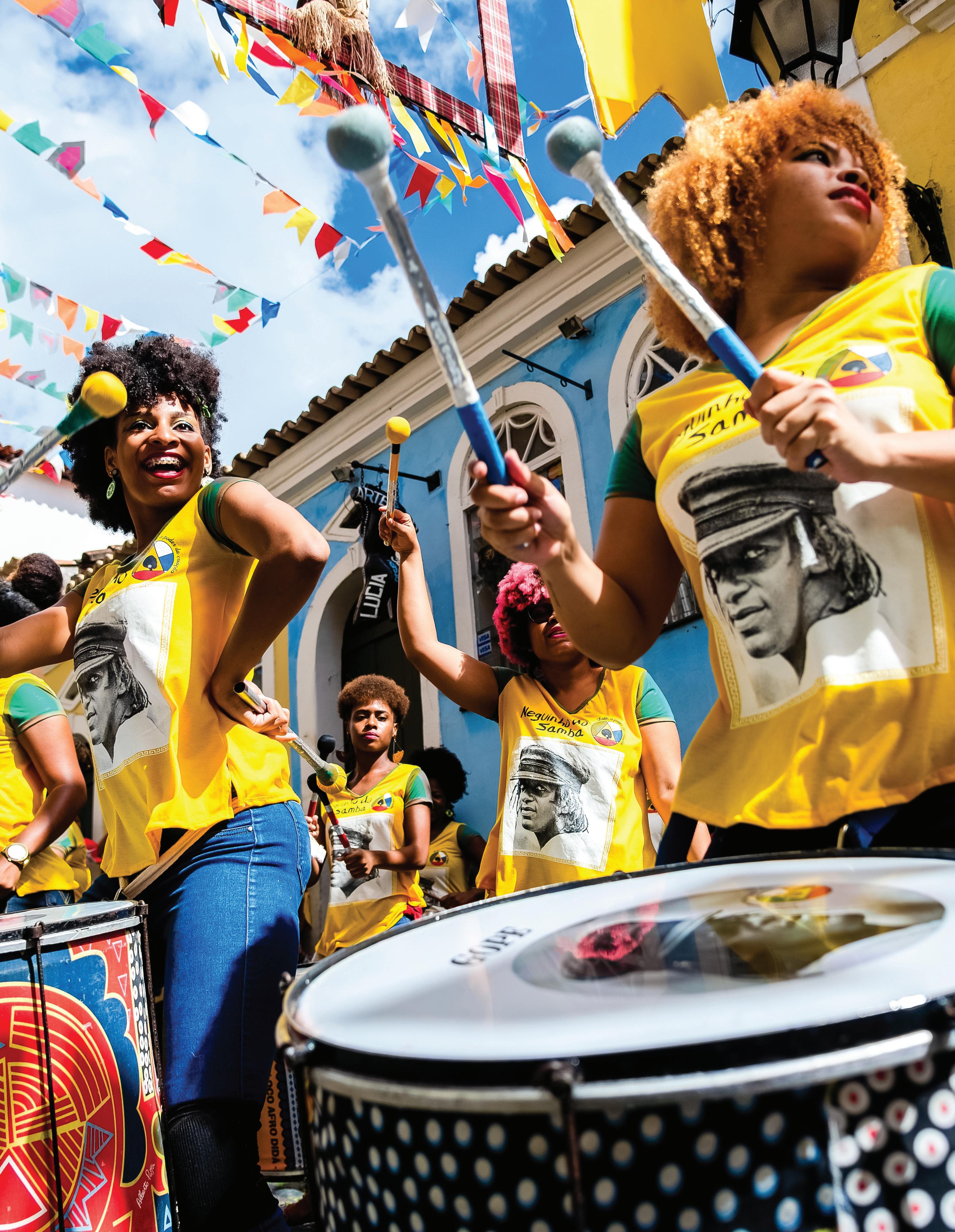
FOREWORD
Welcome! This cookbook presents a comprehensive and research-driven exploration of Brazilian cuisine, built on over three decades of study and eldwork. Compiled from our proprietary reference database, the collection draws upon historical texts, regional documentation, and contributions from Brazilian home cooks and professional chefs. It is designed not as a memoir or lifestyle volume, but as a resource—meticulously structured to illuminate the origins, in uences, and evolution of one of the world s most dynamic food cultures.
Brazilian cuisine is the product of convergence. Indigenous foodways, Portuguese colonial legacies, African diasporic traditions, and immigrant contributions from Japan, Italy, Germany, and the Middle East all intersect within its kitchens. This blending has produced a national cuisine that is not uniform but richly regional: feijoada and farofa in Rio, moqueca in Bahia, churrasco in the South, and açaí in the Amazon basin. Each dish re ects a layered cultural history and a deep connection to place, climate, and community.
Following the format of our database, this volume favors clarity and factual rigor. Entries are informative and contextual, providing both the technical instructions and the cultural signi cance of each dish. Readers will not only learn how Brazilian recipes are prepared, but also how they have persisted, adapted, or hybridized over time. The emphasis is on documentation and explanation, making this a tool for cooks, researchers, and culinary educators alike.
Brazilian food is as complex and vibrant as the society that sustains it. This cookbook o ers a foundation for understanding that complexity—not only through ingredients and techniques, but also through the broader forces that have shaped Brazil s culinary identity. It is a record of tradition and a guide to contemporary expression, presented with the aim of deepening knowledge through the language of food.
NATIONAL CUISINE
Feijoada, a hearty stew made with black beans and meat, is a national dish. Pork is traditional, taking the form of sausage, short ribs, or lesser cuts including ears and feet. The stew is served with a variety of garnishes including rice, collard greens or kale, orange slices, and toasted cassava our called farofa.
Fa or t Foo
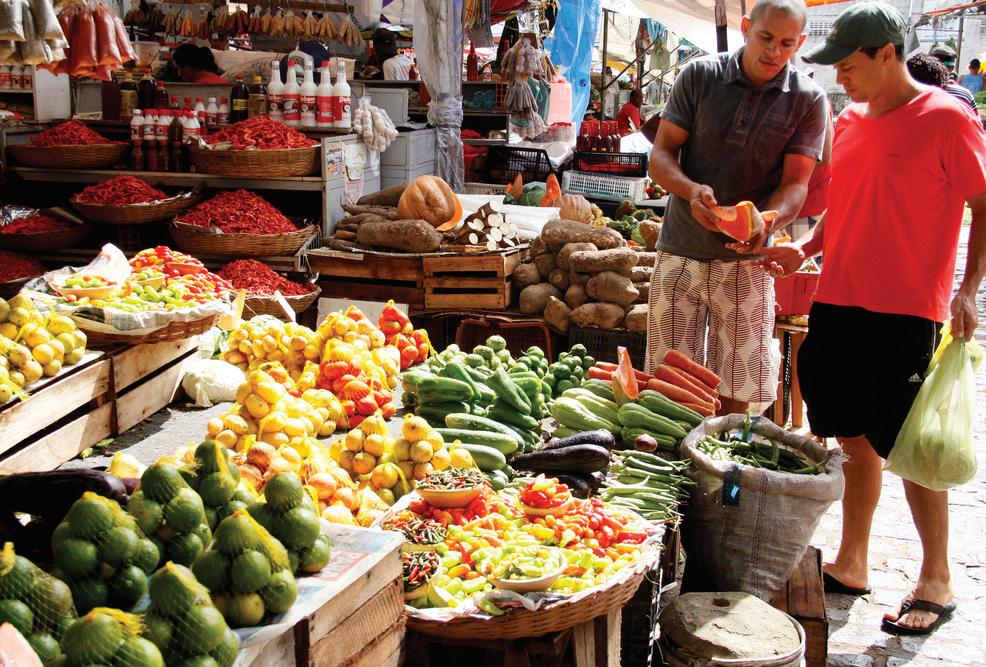
Foods prevalent throughout the country include rice, Brazilian pão de queijo (cheese bread), empadinhas (stu ed pie-shaped pastries), and bacalhao (salt cod). Croquettes—fried, breadcrumb coated balls with various llings—are made with salt cod as well as chicken. Chicharrón is fried pork belly or rinds and is a favored snack or side dish, cut into strips or chunks and typically avored with a bit of salt, garlic, or lime juice.
Cassava (manioc or yuca) is a widely used native root vegetable. An extremely versatile food, cassava is poisonous in raw form but once properly prepared can be eaten in a variety of ways, such as mashed, baked as bread, or fried into chips. Cornmeal preparations also are common in Brazil. Popular spices and seasonings include pepper, clove, cinnamon, parsley, rosemary, chives, and garlic.
Tropical fruit is abundant in Brazil, typically enjoyed fresh, juiced, or added to desserts and alcoholic drinks. Papaya, passion fruit, pineapple, mango, banana, and guava are commonly grown along with lesser-known fruits, some limited by season or region, such as the grape-like jaboticaba, the pear- avored cupuacu, guarana, graviola (soursop or Brazilian paw paw), and the antioxidant- and vitamin-rich açai. Caju is the fruit of the cashew tree that s separate from the nut and is made into honey and brandy.
The undisputable national drink of Brazil is the caipirinha, made with lime, sugar, and cachaça, a sugarcane-derived alcohol. Popular non-alcoholic drinks include guarana soda and Brazilian lemonade (limonada suíça), which skips the lemons and instead mixes limes and sweetened condensed milk into a smoothie-like drink. Commonly served desserts are the sweet, custard-style dish called quindim, chewy coconut- avored cocada, and brigadeiro, a rich chocolate confection similar to a tru e.
REGIONAL CUISINE
Galinhada – This stew of chicken and rice is served with egg, tomato, and fresh parsley. The stew s name means chicken” in Portuguese.
Pequi – This small orange or yellow edible fruit with avors of sweet, sour, and nutty is from the local caryocar brasiliense tree and is used in everything from chicken stews to beverages. When consuming the raw fruit, care must be taken to avoid the spines in the fruit s pulp, as they can lodge in one s mouth.
Pamonha – Made of a paste of boiled sweet corn wrapped in husks, pamonha is a type of tamale that is served plain, savory (with sausage, chicken, or cheese), or sweet (with coconut and sugar).
SOUTHEAST
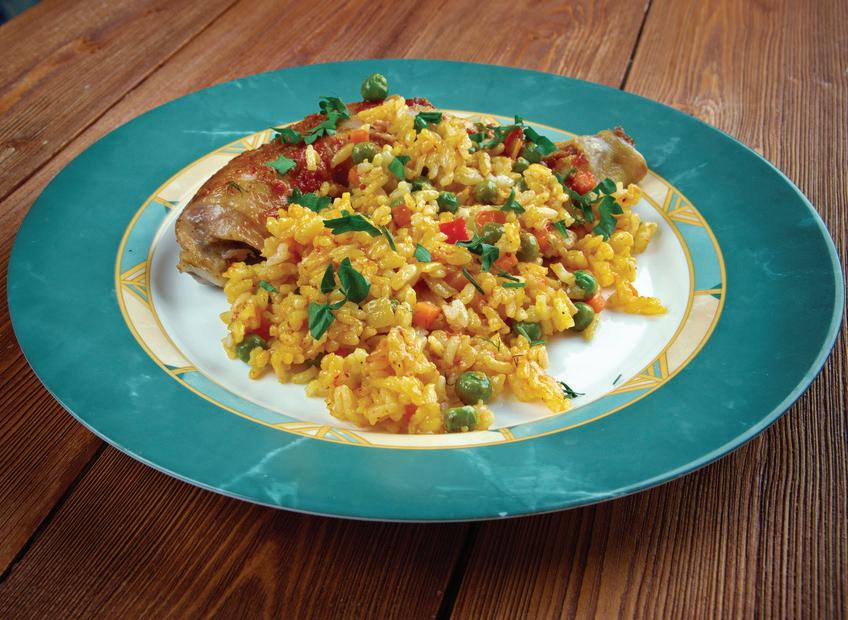
The southeast is the industrial and urban heart of Brazil, centered around the metropolises of São Paulo, a cosmopolitan center known for its multicultural population and diverse cuisine, and Rio de Janeiro, Brazil s biggest beachside city that is acclaimed for its fresh sh and seafood. São Paulo is Brazil s largest and most culturally diverse city, with signi cant Middle Eastern and Japanese communities that have made falafel, kebabs, and sushi extremely popular. Rio de Janeiro is noted for its fresh seafood and light avors, as well as its embrace of Portuguese recipes such as those using bacalhau (salted dried cod). Feijoada (black bean stew) may be Brazil s national dish, but it is particularly beloved throughout the southeast region, where it is typically eaten as a leisurely meal on the short workday of Wednesday or on Sunday afternoons.
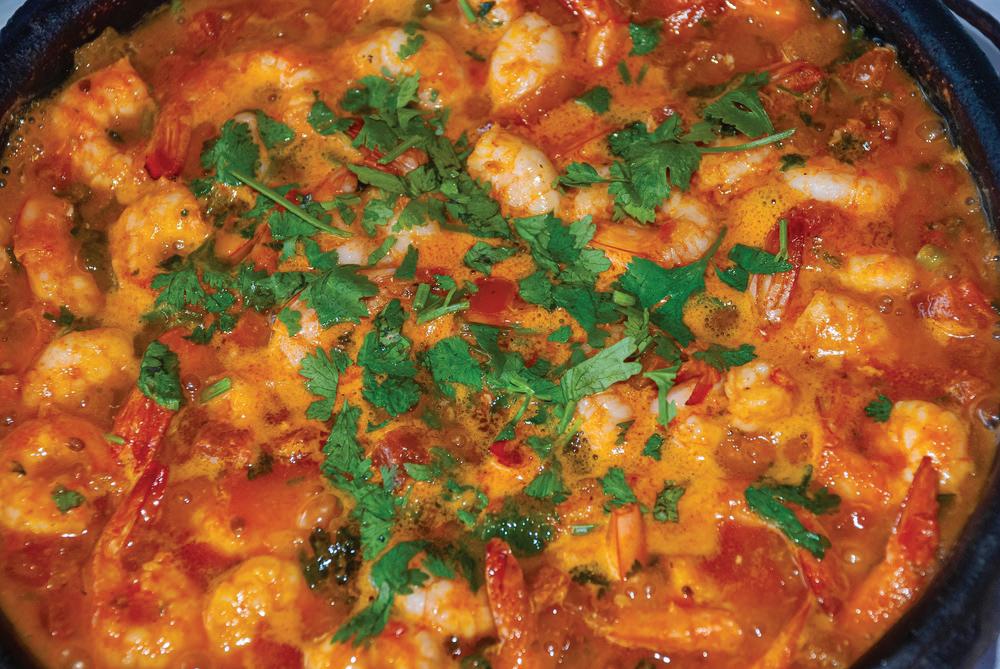
The cuisine of the southeastern state of Minas Gerais is characterized by its use of pork as well as corn, beans, chicken, and cheese. Throughout the southeast, rice and beans are a staple consumed virtually every day. Street foods such as the stu ed and fried pastry, pastel, are extremely popular, particularly among urban populations.
Moqueca Capixaba – The seafood stew of this region is cooked with olive oil instead of palm oil, giving it a lighter avor than the Bahia recipe. It also eschews the hot pepper and coconut milk of the Bahia recipe while using cilantro and annatto as avorings.
DAILY MEALS
Ca a Ma Br ak a t
Although the term café da manhã translates to morning co ee,” it is the Brazilian reference to breakfast. This is generally a light and simple meal that includes pastries or bread with jam and butter—and occasionally ham and cheese—along with tropical fruits such as papaya, guava, or passion fruit. Brazil is the world s largest producer of co ee, and breakfast would be incomplete for most Brazilians without a cup of café com leite, hot co ee with milk.
La a Ma Mor S a k
If they missed breakfast, Brazilians might have a light snack called lanche da manhã—a mid-morning snack—around 10 or 11 a.m., consisting of breads, fruits, or yogurt and often co ee.

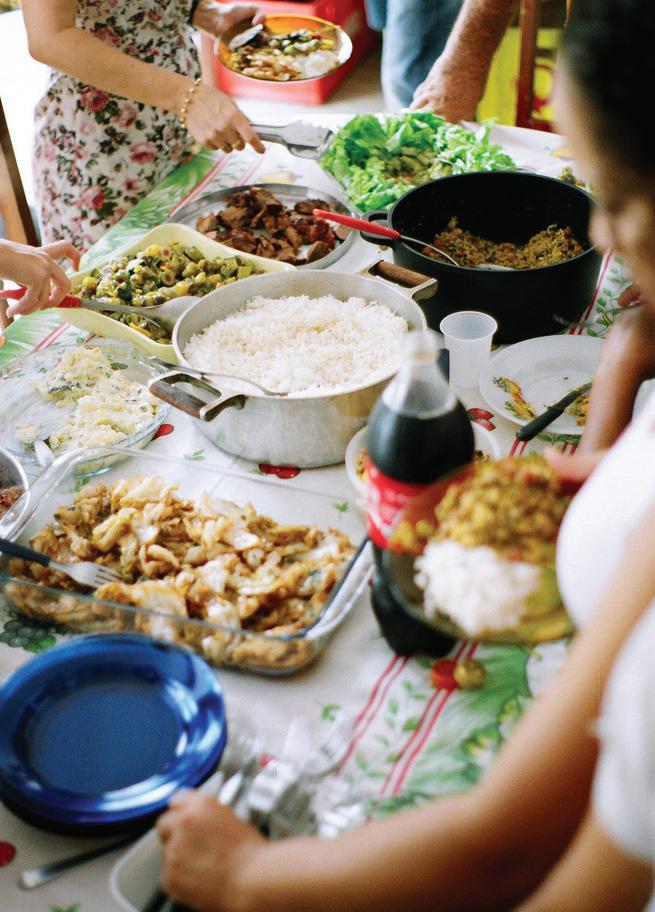
Al o o Lu
For most Brazilians, lunch, or almoço, is the main meal of the day. It usually consists of rice and beans, along with meat and a salad. For more leisurely lunches on the weekend, or on Wednesday, when many Brazilians work a half day, feijoada (bean stew) is often served with rice and diced meats.
Lunch is eaten at a leisurely pace, with plenty of time to socialize with colleagues, friends, or family. Dessert may or may not be served, but a strong espresso will certainly be enjoyed at the end of the meal.
La a Tar A t r oo S a k
For an afternoon snack, called lanche da tarde, Brazilians may head to feiras (local street markets) for snacks such as freshly pressed sugarcane juice, breads, or tasty treats such as pastel, a deep-fried pastry stu ed with any number of ingredients including ground meat, chicken, shrimp, mozzarella cheese, palm heart, or cream cheese.
Sweet variations of pastel are lled with guava and cheese, chocolate, or banana and cinnamon. Pastel is believed to be a kind of modi ed Chinese wonton that was introduced to Brazil by Japanese immigrants in the early 20th century.
STREET FOOD
PICANHA
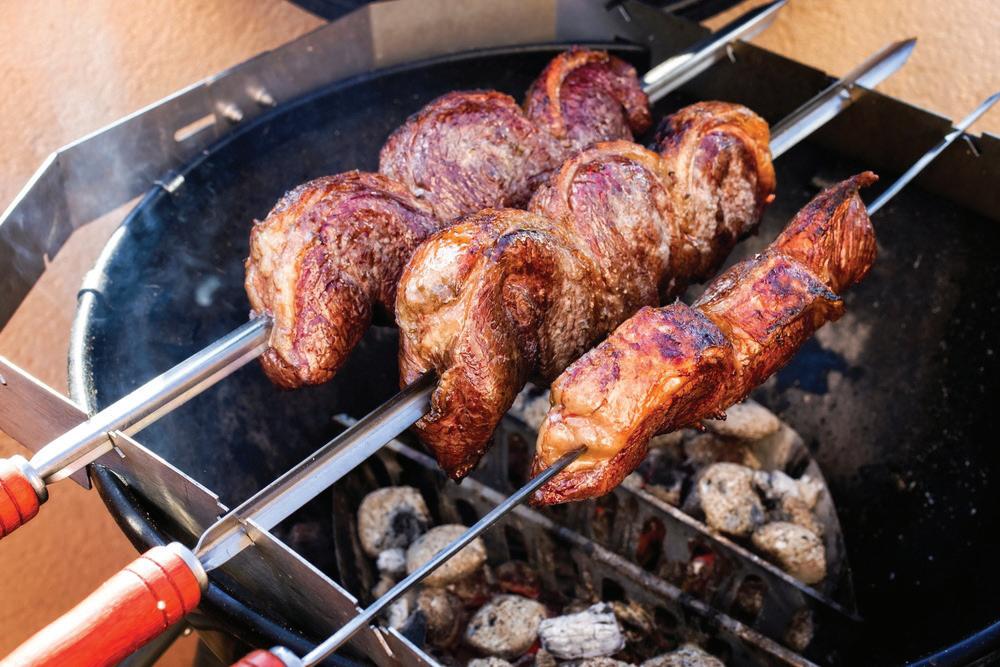
Picanha is a triangular cut of beef that is served not only as street food, but as a key part of the Brazilian barbecue tradition called churrasco. Picanha has a rich beef avor and tender texture and is seasoned simply with salt just before cooking. The meat comes from the top of the rump, speci cally the cap of the sirloin, and is characterized by a thick layer of fat on one side, which adds to its juiciness and avor when cooked. Picanha is often skewered, bent into a horseshoe shape, and cooked over an open re.
Some variations might include additional spices or marinades, depending on regional preferences or personal taste. However, the simplicity of the salt seasoning highlights the quality of the meat. Picanha is occasionally a street food in outdoor markets or food festivals, where it may be served as part of a sandwich with garnishes such as onions, cheese, or chimichurri sauce (containing parsley, garlic, vinegar, olive oil, and chili pepper akes). It is likely to be found in regions with a strong barbecue tradition, such as the southern states of Rio Grande do Sul, Santa Catarina, and Paraná. It might also appear at food markets and festivals in major cities including São Paulo or Rio de Janeiro, where vendors specialize in barbecued meats. Picanha also is a staple at Brazilian churrascarias (steakhouses).
The cut of meat used for picanha has been a favorite in Brazil for decades, particularly in the southern region, which is known for its strong barbecue culture in uenced by the South American cowboys called gauchos. The name picanha may derive from Brazilian
cowboys who used the word picana to tell their colleagues to prick the cows to get them to move. “Picana do bicho” is Portuguese for “prick the animal” and cowboys would prick the cow on the rump, where the top sirloin cap is located.
ACARAJÉ
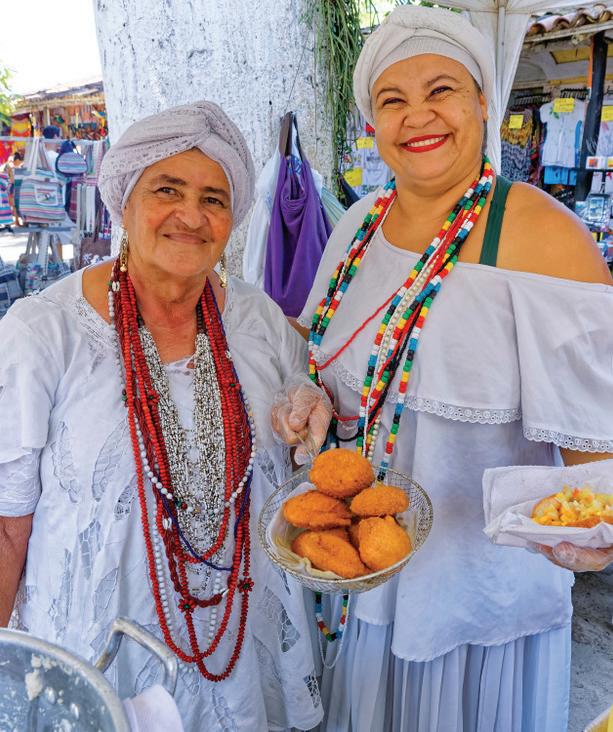
Acarajé is essentially a ball or fritter made of mashed black-eyed beans and onions which is deep-fried in palm oil. These are then normally split and stu ed with spicy llings, most commonly vatapa—a mixture of bread, nuts, prawns, vegetables, and spices. Another lling is called caruru and is made with okra, peanuts, dende oil (from the African oil palm), dried shrimp, coconut, and cashews.
Acarajé is predominantly found in the northeastern state of Bahia, particularly in Salvador. It is a staple of Bahian cuisine and is often sold by baianas—women dressed in traditional white dresses—on the streets. Acarajé has roots in Afro-Brazilian culture, particularly among the Bahian community and originated from West African cooking. In the Afro-Brazilian Candomblé religion, acarajé is a sacred food.
DID YOU KNOW?
Bra l a Barb u
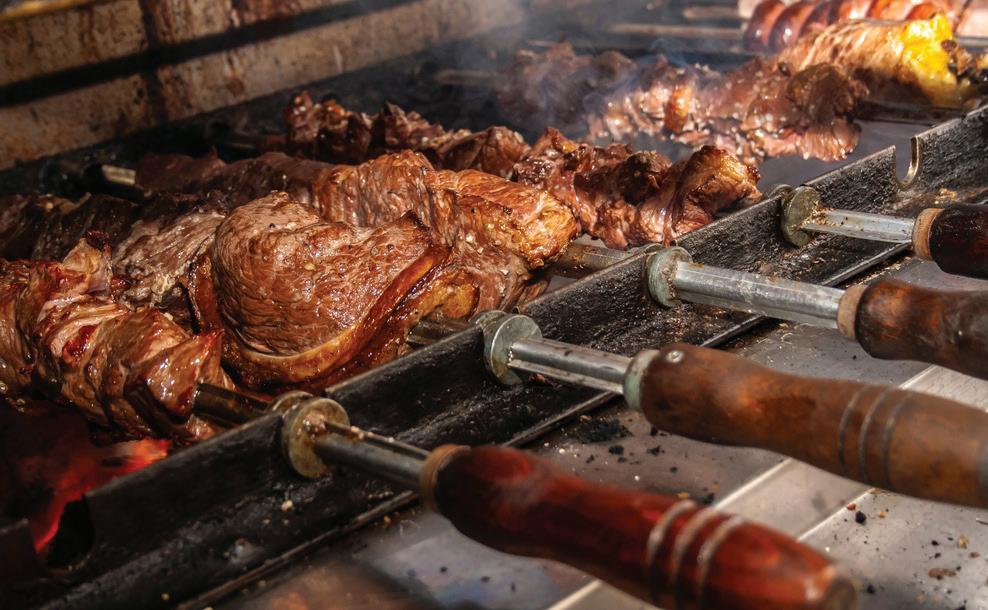
Churrasco is a style of barbecue that is a culinary staple in Brazil, particularly in the southern states such as Rio Grande do Sul. This cooking style involves grilling a variety of meats, predominantly beef, on skewers over charcoal, which imparts a distinctive smoky avor. Churrasco is often accompanied by chimichurri, a sauce made of herbs, garlic, and vinegar, which complements the rich avors of the grilled meat.
Churrasco is not just a cooking method but a social event, often involving family and friends gathering around the churrasqueira. This tradition showcases the importance of meat in the Brazilian diet and reects the gaúcho (cowboy) culture of southern Brazil, where cattle ranching is a key part of the economy.
T A a o a Fla or Duo

In the northern part of Brazil, particularly in the Amazonas and Pará regions, tucupi and jambu are two
ingredients often used together to create distinctive and vibrant dishes. Tucupi is a yellow sauce made from wild manioc root, fermented and boiled to remove toxins. Jambu is an herb known for its tingling sensation on the palate and its ability to enhance avors.
Together, they are used in traditional dishes such as pato no tucupi (duck in tucupi sauce) and tacacá, a soup that combines these ingredients with dried shrimp and goma (tapioca starch). This combination is celebrated during the Círio de Nazaré, one of Brazil s largest religious festivals, highlighting its cultural and regional importance.
Nat o al D
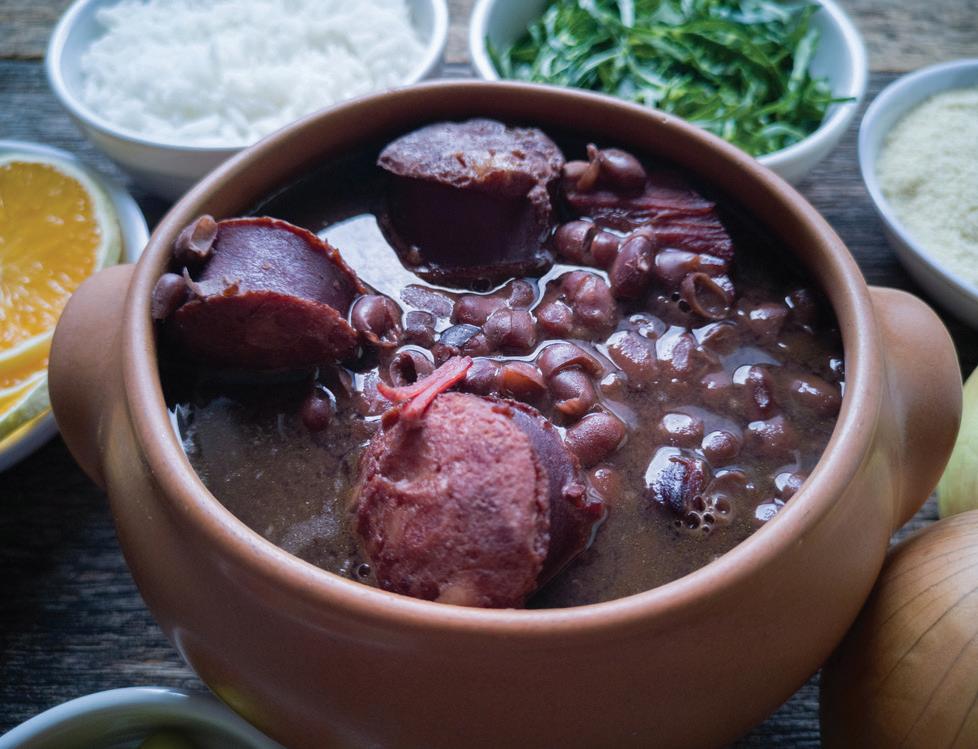
Feijoada is considered Brazil s national dish, a hearty stew of black beans with pork or beef, traditionally served over rice with orange slices, collard greens, and farofa. The origins of feijoada are debated, but it is often thought to have been derived from European stews, adapted by African slaves who added local ingredients and avors.
This dish is typically reserved for weekend consumption, particularly on Saturdays, when it is enjoyed leisurely with family and friends. Feijoada’s rich avors and heavy nature make it more than just a meal it s a culinary event, re ecting the blending of ethnic inuences that characterize Brazilian cuisine. The communal aspect of feijoada mirrors the Brazilian ethos of sharing and hospitality.
TEA CULTURE
o It E o
Although there aren t particular ceremonies surrounding tea in Brazil, drinking mate rivals the consumption of traditional tea in other cultures and involves many customs. The prepared yerba mate leaves are placed in a gourd and mixed with water. A metal straw, called a bomba, that is traditionally made of silver, is then placed in the gourd. The bomba has small holes and often other lters near the bottom to stop solid material from moving up the straw while allowing the liquid through.
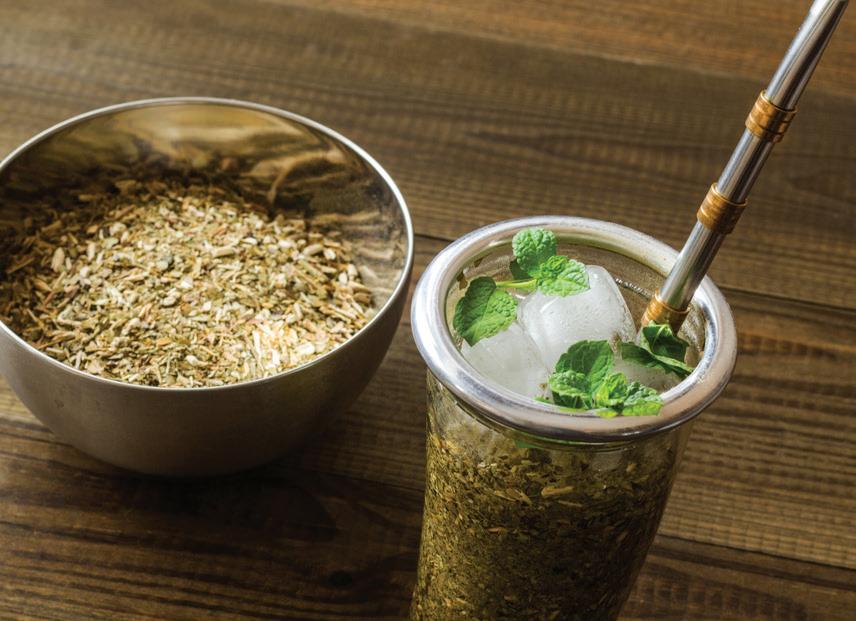
After brewing the rst batch of mate, the host traditionally drinks the entire thing to make sure the ratio of water to mate is right and it is not too hot or cold, as it can be served both ways. In some regions of Brazil, cold mate (called tereré or chá mate) is often sweetened and optionally avored with lemon, mint, or passion fruit.
The host is frequently referred to as the saint or the fool, as the mate often needs to be adjusted for the next drinker, and the gourd will be re lled then passed to the next person in the group. The gourd can be re lled often, as many as 10–15 times, with older leaves being more potent. The sharing of mate is a social custom of hospitality and regional identity that transcends simply quenching one s thirst.
I t r t Fa t
• Mate is traditionally served out of a dried gourd. Like the tea utensils of many other nations, wealthy families would often commission custom metal or ceramic gourds with intricate designs and beautiful metalwork to showcase their wealth. These gourds, along with the equally intricate silver bombas, are highly prized by collectors.
• Mate can sometimes be referred to as the drink of the gods. A legend says that two divine beings who were visiting earth one day were being stalked by a jaguar. An old man saved them and to repay him for his kindness, the gods gifted him with the yerba mate plant.
BOLINHOS DE BACALHAU
(SALT COD FRITTERS)
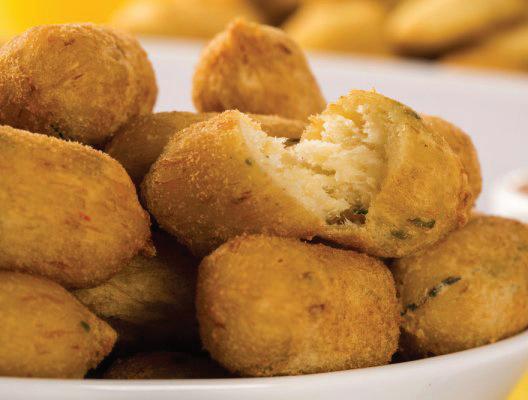
Recipe Servings: 4–6
Dietary Considerations: Dairy Free, Kosher, Halal
Bolinhos de bacalhau, or salt cod fritters, are a beloved Brazilian appetizer with Portuguese roots, made from a avorful mixture of bacalhau (salted cod sh), mashed potatoes, onions, parsley, and eggs, which is then shaped into small ovals or balls and deep-fried until golden and crispy. The exterior is crisp and crunchy, while the inside remains soft and rich, with the salty, savory taste of the cod balanced by the smoothness of the potato. These fritters are a popular feature at family gatherings, parties, and bars, where they are often served hot with a squeeze of lime or accompanied by a spicy dipping sauce or vinaigrette. Though rooted in Portuguese culinary tradition, bolinhos de bacalhau have become fully embraced in Brazilian cuisine, especially during holidays when salt cod dishes are popular. Their satisfying texture and bold avor make them a perennial favorite on appetizer platters and as part of Brazil s diverse array of petiscos (snacks).
POLENTA FRITA (FRIED POLENTA)

Prep Time: 10 minutes
Rest Time: 1 hour 30 minutes Cook Time: 20 minutes Total Time: 2 hours
Recipe Servings: 4
Dietary Considerations: Vegetarian, Gluten Free, Halal
Polenta frita is a beloved Brazilian side dish made from cooked and cooled polenta, which is then cut into strips and deep-fried until crispy on the outside and soft on the inside. This dish has strong Italian in uences, brought to Brazil by Italian immigrants, particularly in the southern regions of the country where polenta is a staple. Traditionally served as a side dish for grilled meats or as an appetizer at churrascarias, polenta frita provides a deliciously crunchy contrast to rich and savory foods. The use of cheese in the mixture adds extra avor, making it even more irresistible. Simple yet full of texture and taste, polenta frita is a classic comfort food enjoyed in Brazilian homes and restaurants alike.
AMLOU SALADA DE FEIJÃO FRADINHO
(BLACK-EYED PEA SALAD)
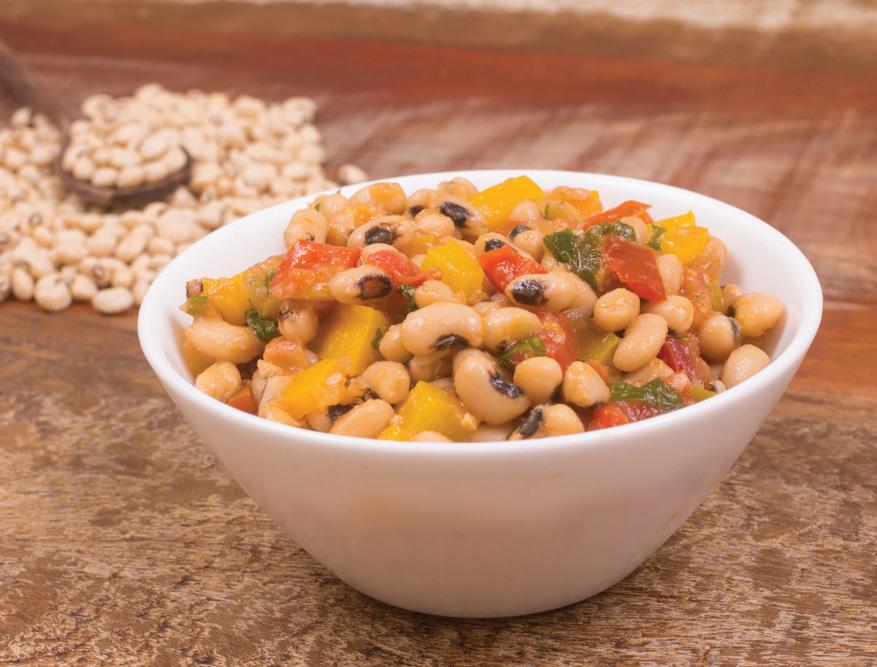
Prep Time: 15 minutes Rest Time: 15 minutes Total Time: 30 minutes
Recipe Servings: 4 Dietary Considerations: Vegetarian, Vegan, Gluten Free, Dairy Free, Kosher, Halal
Salada de feijão fradinho, or black-eyed pea salad, is a refreshing and protein-packed dish commonly enjoyed in northeastern Brazil, especially in Bahia. Feijão fradinho (black-eyed peas) are a key ingredient in Afro-Brazilian cuisine and often used in traditional dishes. This salad is light yet avorful, featuring a zesty combination of fresh vegetables, herbs, and lime dressing. It is commonly served as a side dish at barbecues, with seafood, or alongside Brazilian staples including rice and farofa (toasted cassava our). Easy to prepare and full of nutritious ingredients, salada de feijão fradinho is a perfect way to enjoy the delicious avors of Brazil in a simple and wholesome dish.
AMLOU BAURU
(ROAST BEEF SANDWICH)
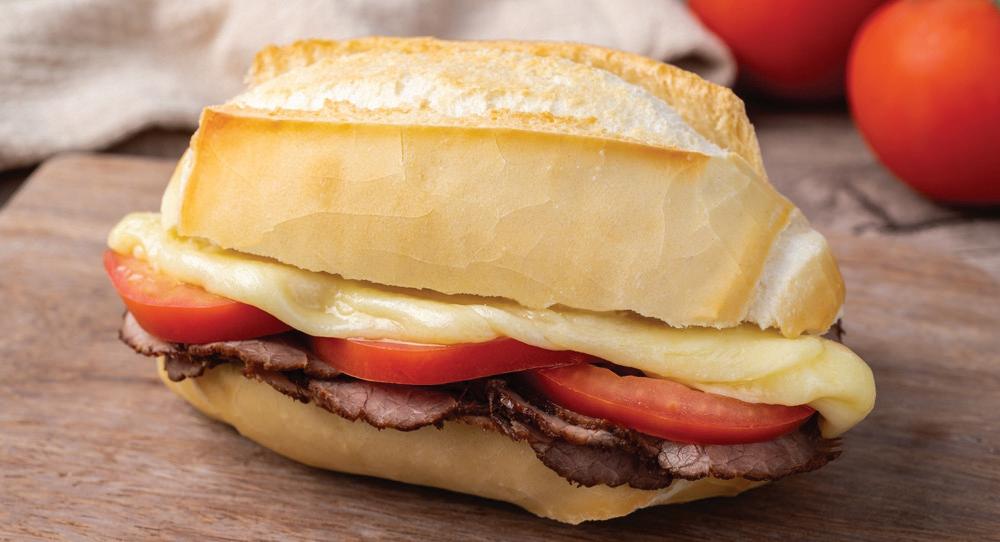
Prep Time: 5 minutes Cook Time: 10 minutes Total Time: 15 minutes
Recipe Servings: 1 Dietary Considerations: Halal
Bauru is a popular sandwich invented in 1934 in São Paulo by student Casimiro Pinto Neto, who made a special request for this combination of ingredients and preparation method. Named after Neto s hometown, the Bauru was so good that others soon wanted to try it, and its popularity exploded. A crusty roll is layered with roast beef, tomatoes, pickles, and cheese, then baked to melted perfection.
D r t o
I r t
1 crusty Portuguese-style bread roll
4 slices roast beef
3 thin slices tomato
4–6 slices dill pickle
3 thick slices mozzarella
1. Preheat oven to 355°F (180°C).
2. Slice roll in half lengthwise.
3. Layer roast beef, tomato slices, pickle slices, and mozzarella on the bottom half of the roll.
4. Close sandwich with top half of the roll and put it on a baking sheet.
5. Heat sandwich in the oven for about 5 minutes, or until the cheese starts to melt.
6. Serve Bauru hot.
QUIABO REFOGADO (SAUTÉED OKRA)
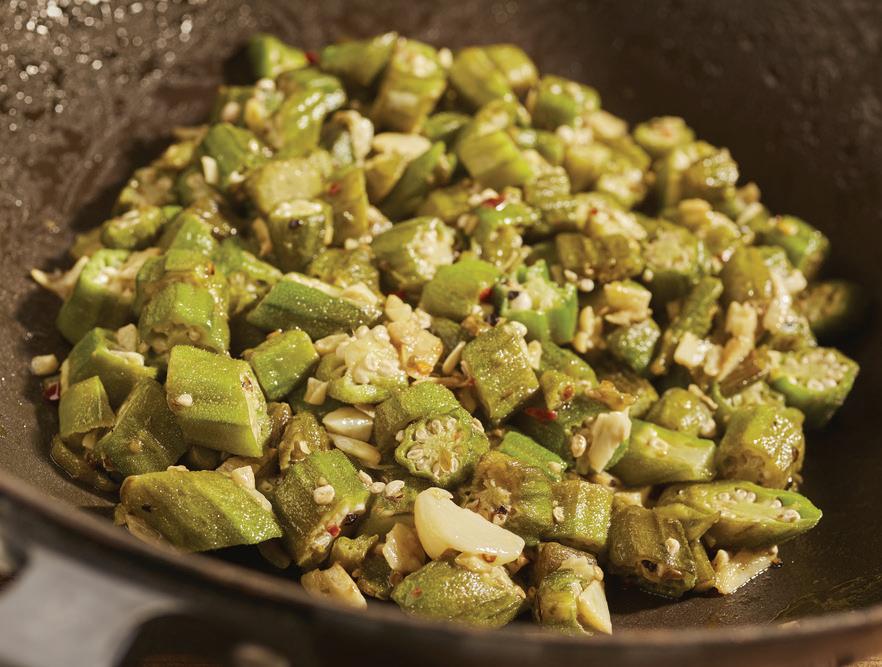
Prep Time: 10 minutes Rest Time: 5 minutes Cook Time: 15 minutes Total Time: 30 minutes
Recipe Servings: 4 Dietary Considerations: Vegetarian, Vegan, Gluten Free, Dairy Free, Kosher, Halal
Quiabo refogado is a classic Brazilian side dish featuring quiabo (okra) sautéed with onions, garlic, and simple seasonings. This dish is especially popular in Minas Gerais and is often served alongside traditional Brazilian meals, including rice, beans, and meats. While okra is known for its slimy texture, the Brazilian cooking method helps reduce the mucilage, making it more enjoyable. By quickly sautéing the okra in a hot pan, its natural avor shines through while retaining a tender yet slightly crisp texture. Simple yet avorful, quiabo refogado is a nutritious and delicious way to enjoy okra in Brazilian cuisine.
BOLINHOS DE BACALHAU (SALT
COD FRITTERS)

Recipe Servings: 4–6
Dietary Considerations: Dairy Free, Kosher, Halal
Bolinhos de bacalhau, or salt cod fritters, are a beloved Brazilian appetizer with Portuguese roots, made from a avorful mixture of bacalhau (salted cod sh), mashed potatoes, onions, parsley, and eggs, which is then shaped into small ovals or balls and deep-fried until golden and crispy. The exterior is crisp and crunchy, while the inside remains soft and rich, with the salty, savory taste of the cod balanced by the smoothness of the potato. These fritters are a popular feature at family gatherings, parties, and bars, where they are often served hot with a squeeze of lime or accompanied by a spicy dipping sauce or vinaigrette. Though rooted in Portuguese culinary tradition, bolinhos de bacalhau have become fully embraced in Brazilian cuisine, especially during holidays when salt cod dishes are popular. Their satisfying texture and bold avor make them a perennial favorite on appetizer platters and as part of Brazil s diverse array of petiscos (snacks).
BEEF
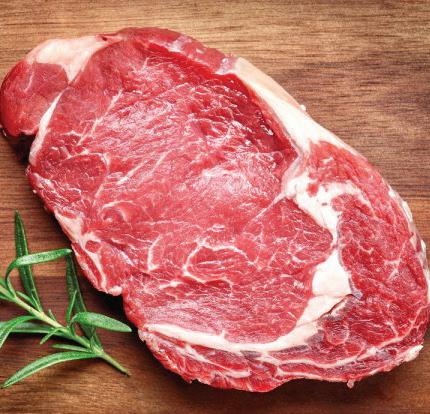
D r t o
Beef is the culinary name given to meat sourced from cattle. Beef comes in a variety of cuts, including roasts, ribs, and steaks that include let mignon, rib eye, and hanger steak, among others.
Or
Beef cattle are believed to have originated in Europe, before making their way to North America in the 1500s, when the Spanish brought them through what is now Mexico. There also is some indication that some strains of cattle may have originated in Asia and Africa.
ar t
Beef cattle breeds include Aberdeen Angus, Romagnola, North Devon, Murray Gray, English Longhorn, Gascon, Australian Charbray, Belgian Blue, Pineywoods, Irish Moiled, Black Hereford, Texas Longhorn, and Wagyu.
Fla or Pro l
Beef has a rich, meaty avor that is in uenced by the type of cattle, diet of the cow, cooking method, and even the temperature to which the beef was cooked. Grain-fed beef tends to be fattier and therefore richer in avor, while grass-fed beef is leaner with a brighter avor.
Nutr t Pro l
Beef is an excellent source of protein, vitamin B12, niacin, ribo avin, iron, phosphorous, copper, zinc, selenium, pantothenic acid, and vitamin C. It also is a good source of magnesium, manganese, and thiamine and it contains small amounts of pyridoxine, folate, calcium, and sodium.
Pr arat o
Beef can be grilled, barbecued, broiled, roasted, braised, cured, smoked, dried, chipped, or fried. Pot roasts made with onions, potatoes, and carrots are a popular Sunday meal in the United States, while steak served with an herbaceous green sauce called chimichurri is one of the signature dishes of Argentina. The French popularized steak tartare, a patty of nely minced raw beef combined with onions, capers, mustard, pepper, and Worcestershire sauce that is topped with a raw egg yolk.
S a o
Beef is available year-round.
D You K o ?
• Due to the Hindu belief that cows are sacred, several Indian states have outlawed both the selling and consumption of beef. Violating the law is punishable by up to ve years in prison and a US 150 ne.
• Authentic Kobe beef, a rare and highly marbled variety that comes from Wagyu cattle raised in Japan s Hyogo Prefecture, sells for more than US$300 per pound.


D r t o
Pork is the meat of the domesticated pig in the Suidae family. Pigs are alternately called swine, hogs, and boars. Most pigs are slaughtered for meat when they are between 2 weeks and 1 year old.
Or
Pigs were domesticated in China and the Fertile Crescent by at least 5000 BCE.
ar t
Common domesticated varieties of pig, Sus domesticus, include Landrace, Berkshire, Chester White, Duroc, Gloucester Old Spot, Hampshire, Hereford, Iberico, Kunekune, Meishan, Red Wattle, Tamworth, and American Yorkshire.
Fla or Pro l
Pork has a mild avor with little gaminess. It takes on other avors well and is often salty, since it is commonly cured, smoked, or brined.
Nutr t Pro l
Pork is categorized as a red meat and is high in cholesterol, although trimmed pork can be leaner than other red meats. Pork is rich in thiamine, niacin, pyridoxine, phosphorus, and selenium. It is a good source of magnesium, potassium, sodium, zinc, ribo avin, pantothenic acid, and vitamin B12.
Pr arat o
Pork can be cured or smoked to make ham, bacon, salt pork, or it can be cooked and canned as in Spam. Fresh or preserved pork can be baked and pan-fried. Barbecued pork includes whole-roasted suckling pig, ribs, pulled pork, and sausage—including hot dogs, chorizo, and breakfast or Cumberland sausages. The characteristically red-tinged Cantonese roasted pork, charsiu, is abundant in Asian cuisine. Almost every part of a pig is used, including pork rinds made from the skin, lard processed from fat, and the widely eaten feet, jowls, and tail.
S a o
Pork is available year-round.
D You K o ?
• Pork is the most common meat consumed in Asian countries. Conversely, pork is prohibited by some religions, including Judaism, Islam, and Rastafarianism. For this reason, the sale of pork is highly restricted in Israel and altogether forbidden in some countries where Sharia law is in e ect.
• The National Pork Board in the United States ran a successful advertising campaign between 1987 and 2011 in which pork was promoted as “the other white meat,” defying scienti c classi cation and generating new perceptions about the nutritional properties of pork.
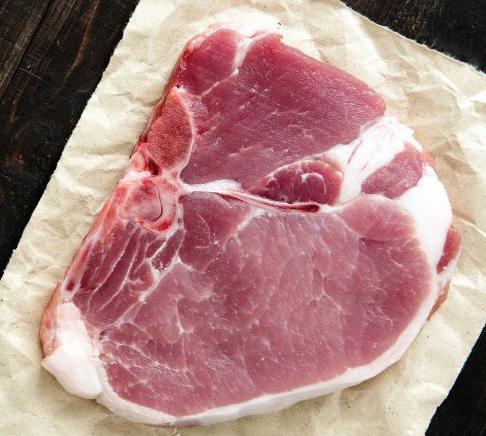
ABOUT WORLD TRADE PRESS
World Trade Press is a publishing and information products company specializing in country-based information in the elds of culture, business, food, language, local living, logistics, and travel. In business since 1993, the company s mission is to strengthen mutual understanding across cultures by lowering the information barriers that prevent individuals and organizations from succeeding in the international arena. World Trade Press clients include academic and public libraries, universities, global businesses, government agencies, global logistics rms, diplomats, business travelers, tourists, and individuals with a passion for understanding the world.
Databa
World Trade Press has developed and maintains more than a dozen large-scale online databases of country and city information covering business, culture, food, import/export, local living, and travel for 174 world countries and 201 world cities.
P al Book Atla a Ma
World Trade Press has published multiple editions of more than 100 physical reference books, country business guides, books for international trade and logistics, world atlases for travel and logistics, and world and country wall maps.
Pro o al R ort a E Book
World Trade Press has developed and maintains more than two dozen professional-level country e-reports and e-books for each of 174 countries. These products cover topics such as business culture, cost of living, demographics, education, environment, holidays and festivals, government, money and banking, music, quality of life, religion, security, social indicators, and more.
Co tr butor
All World Trade Press products—from our databases and e-content reports to our physical books, maps, and atlases—are created through the collaboration of a dedicated internal sta of researchers, writers, editors, and cartographers and more than 100 external subject-matter experts to create world-class content in the elds of culture, business, communications, food, international trade, language, logistics, security, and travel. To view a partial list of contributors to titles in The Global Kitchen series, go to www.TheGlobalKitchen.com/ contributors.html.
Learn more about World Trade Press and its products at www.WorldTradePress.com.
